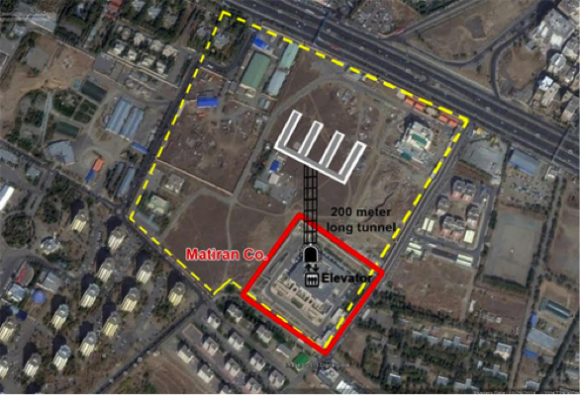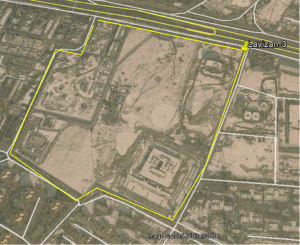I’ve got a new column coming out on the allegation that Iran has a covert enrichment site in the Tehran suburbs called “Lavizan-3.” Along with Paul-Anton Krüger, I tracked down someone who actually visited the site recently. It is precisely what Iran says it is: a facility to make identification documents. NCRI is full of it.
Anyway, my friend Phil Baxter, a PhD student interested in open source work, put together a little rundown of the claims. I found it really useful, not least because it confirmed a bunch of things I thought but was too lazy to write down. So, here is Phil’s analysis.
The Lavizan-3 Site
On Tuesday, the exiled National Council of Resistance of Iran announced that Iran had been hiding yet another nuclear-related facility. This time, in the heart of Tehran. The facility, known as the Lavizan-3 for the neighborhood in which it resides, is officially operated by Matiran Company and is used to process passports and identity cards. Unofficially, it is claimed to conduct illicit uranium enrichment using advanced centrifuges deep underground.
The group attempts to validate their claims with satellite images and photos supposedly taken inside the tunnel. The photos shows a vault door, which they also say is lined with lead to prevent radiation leaks. Additionally, that area is home to a number of licit Atomic Energy of Iran facilities and military housing, which they use to bolster their claim.
Wikimapia as even already updated their site with a new label for the site based on the group’s assertations.
However, there are several curious inconsistencies with their claim when examining the satellite imagery.
First, there is no electrical substation on site or high-tension power lines running to the facility. If the site is imagine a large scale advanced gaseous centrifuge operation at that location, they’re going to need quite a bit of power (most advanced centrifuges run at between 400-1000 amps). If you look at the facility at Natanz, there is a massive switching station to handle the power load. Here, doesn’t even look like a light-industry substation nearby.
The second inconsistency is brought to you by snow. If we look back to imagery from the winter months with snow on the ground, there aren’t any distinguishable dry spots on the below image that would indicate air venting. With any underground facility, going to need air circulated, which would warm the ground, melting snow. If underground where NCRI claims, you would see large areas of no snow in the circled area of the image. Air could be circulated through the buildings, but even those don’t appear to be able to provide the volume necessary.
Next, how do they move material in and out?! If we are talking an experimental facility, that’s one thing. But an enrichment plant is going to need the capability to drive materials easily to the locations they are needed. Doesn’t appear to be any tunnels for entrance and egress of trucks.
This last piece of evidence is bolstered a bit by the fact that after review over a dozen images over the last 10 years, there was never once an image taken with a motorized vehicle on the grounds. It seems a bit odd that a delivery truck carrying UF6 gas canisters are never spotted.
Additionally, if the facility has been in operation since 2008, you imagine that some trace of construction of a massive underground facility would linger. Nope. Not there. The ground where the stated facility is located is untouched since 2004.
One final point is on the lead lined door of the supposed facility. Uranium-238 and 235 are both undergo alpha-decay. A couple of sheets of paper would be fine. Inclusion of this tenuous evidence serves only to cast doubt on the group’s claims.
Is it is possible that Iran is hiding advanced centrifuges at a secret facility for the purpose of getting to a breakout point? Sure. Is it at Lavizan-3? Evidence really isn’t there.
Phil Baxter is currently a PhD student in the International Affairs, Science, and Technology program in the Sam Nunn School of International Affairs at Georgia Tech. He completed his B.A. in Political Science and History at Grove City College and his M.P.P in Public Policy, with a focus in national security policy, from George Mason University. Prior to joining the Sam Nunn School, Phil worked in international security related positions in the Washington, DC area, including serving as a researcher at the National Defense University on a program focused on nuclear nonproliferation and as a Nonproliferation Fellow at the National Nuclear Security Administration. His current research focuses on international security issues, primarily with respect to nuclear weapons. In particular, Phil is interested in deterrence and strategic stability in the 21st century.





Though I generally agree with the conclusion, keep in mind that a facility with about a couple of cascades worth of IR-1s would be enough to shove 5% up to WG in good throughput, so the power signature is much lower.
You lost me when you expressed that “Wikimapia updated their site”. Users update Wikimapia, like any other wiki. So anyone could have made the edit, and it’s highly doubtful anyone who works for Wikimapia had anything to do with it.
The linked article claims that the picture of the door used in NCRI report is actually from an Iranian website that make safes.
link: http://eaworldview.com/2015/02/iran-special-fake-photo-used-shock-claim-new-underground-nuclear-facility/
Jeffrey has written further details here: http://foreignpolicy.com/2015/03/03/that-secret-iranian-nuclear-facility-you-just-found-not-so-much/
The open-source Internet world is a completely different world from the paper-based and localized electronics of even 15 years ago. One can find out numerous facts about a country, even “secrets”, without ever setting foot in the country. As Jeffrey stated in a recent talk on China, this is “weird”.
…centrifuges don’t run at 1000 amps…how could they? the needle bearing is almost without friction and the ringmagnet is even better…..they consume less than a full size light bulp (the old days version of it) and even a cascade is not 1000 amps (164*100Watt=16400Watt)…also a big roots pump is only a few kW…so it depends all on the size of the non-site…. but it will not melt snow…
The contribution from any centrifuges to heat should be negligible. In some cases, heating the building might do the trick, but there are plenty of snow-covered enrichment facilities. Case in point, one can see images of a snow covered Angarsk UEP.
Little glitch here:
First, there is no electrical substation on site or high-tension power lines running to the facility. If the site is >>>>imagine<<<<< a large scale advanced gaseous centrifuge operation at that location, they’re going to need quite a bit of power (most advanced centrifuges run at between 400-1000 amps)